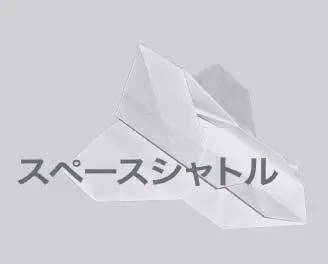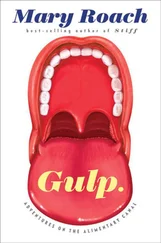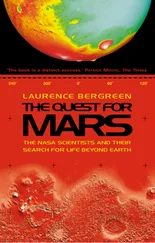Two lines further along, we see Lovell saying, “What a sight to behold!” We don’t know what he’s referring to, but there’s a good chance it’s not the moon. According to more than one astronaut memoir, one of the most beautiful sights in space is that of a sun-illumined flurry of flash-frozen waste-water droplets. Space doesn’t just encompass the sublime and the ridiculous. It erases the line between.
1. HE’S SMART BUT HIS BIRDS ARE SLOPPY
Japan Picks an Astronaut

First you remove your shoes, as you would upon entering a Japanese home. You are given a pair of special isolation chamber slippers, light blue vinyl imprinted with the Japan Aerospace Exploration Agency logo, the letters JAXA leaning forward as though rushing into space at terrific speed. The isolation chamber, a freestanding structure inside building C-5 at JAXA’s headquarters in Tsukuba Science City, is in fact a home of sorts, for one week, for the ten finalists competing for two openings in the Japanese astronaut corps. When I came here last month, there wasn’t much to see—a bedroom with curtained “sleeping boxes,” and an adjoining common room with a long dining table and chairs. It’s more about being seen. Five closed-circuit cameras mounted near the ceiling allow a panel of psychiatrists, psychologists, and JAXA managers to observe the applicants. To a large extent, their behavior and the panel’s impressions of them during their stay will determine which two will wear the JAXA logo on spacesuits instead of slippers.
The idea is to get a better sense of who these men and women are, and how well they’re suited to life in space. An intelligent, highly motivated person can hide undesirable facets of his or her character in an interview [1] As when astronaut Mike Mullane was asked by a NASA psychiatrist what epitaph he’d like to have on his gravestone. Mullane answered, “A loving husband and devoted father,” though in reality, he jokes in Riding Rockets , “I would have sold my wife and children into slavery for a ride into space.”
or on a questionnaire—which together have weeded out applicants with obvious personality disorders—but not so easily under a weeklong observation. In the words of JAXA psychologist Natsuhiko Inoue, “It’s difficult to be a good man always.” Isolation chambers are also a way to judge things like teamwork, leadership, and conflict management—group skills that can’t be assessed in a one-on-one interview. (NASA does not use isolation chambers.)
The observation room is upstairs from the chamber. It is Wednesday, day three of the seven-day isolation. A row of closed-circuit TVs are lined up for the observers, who sit at long tables with their notepads and cups of tea. Three are here now, university psychiatrists and psychologists, staring at the TVs like customers at Best Buy contemplating a purchase. One TV, inexplicably, is broadcasting a daytime talk show.
Inoue sits at the control console, with its camera zooms and microphone controls and a second bank of tiny TV monitors above his head. At forty, he is accomplished for his age and widely respected in the field of space psychology, yet something in his appearance and demeanor makes you want to reach over and pinch his cheek. Like many male employees here, he wears open-toed slippers over socks. As an American, I have large gaps in my understanding of Japanese slipper etiquette, but to me it suggests that JAXA, as much as his house, feels like home. For this week, anyway, it would be understandable; his shift begins at 6 A.M. and ends just after 10 P.M.
On camera now, one of the applicants can be seen lifting a stack of 9-by-11-inch envelopes from a cardboard box. Each envelope is labeled with an applicant’s identifying letter— A through J —and contains a sheet of instructions and a square, flat cellophane-wrapped package. Inoue says the materials are for a test of patience and accuracy under pressure. The candidates tear open the packages and pull out sheaves of colored paper squares. “The test is involving… I am sorry, I don’t know the word in English. A form of paper craft.”
“Origami?”
“Origami, yes!” Earlier today, I used the handicapped stall in the hallway bathroom. On the wall was a confusing panel of levers, toggles, pull chains. It was like the cockpit of the Space Shuttle. I yanked a pull-chain, aiming to flush, and set off the emergency Nurse Call alarm. I’m wearing pretty much the same face right now. It’s my Wha? face. For the next hour and a half, the men and women who vie to become Japan’s next astronauts, heroes to their countrymen, will be making paper cranes.
“One thousand cranes.” JAXA’s chief medical officer, Shoichi Tachibana, introduces himself. He’s been standing quietly behind us. Tachibana came up with the test. A Japanese tradition holds that a person who folds a thousand cranes will be granted health and longevity. (The gift is apparently transferable; the cranes, strung on lengths of thread, are typically given to patients in hospitals.) Later, Tachibana will place a perfect yellow crane, hardly bigger than a grasshopper, onto the table where I sit. A tiny dinosaur will appear on the arm of the sofa in the corner. He’s like one of those creepy movie villains who sneak into the hero’s home and leave behind a tiny origami animal, their creepy villain calling card, just to let him know they were there. Or, you know, a guy who enjoys origami.
The applicants have until Sunday to finish the cranes. Paper squares are spread across the table, the vibrancy of the colors played up by the drabness of the room. Along with the shoebox architecture and the rockets reclining around the grounds, JAXA has managed to duplicate the uniquely unappealing green-gray you often see on NASA interior walls. It’s a color I have seen nowhere else and on no paint chip, yet here it is.
The genius of the Thousand Cranes test is that it creates a chronological record of each candidate’s work. As they complete their cranes, candidates string them on a single long thread. At the end of the isolation, everyone’s string of cranes will be taken away and analyzed. It’s forensic origami: As the deadline nears and the pressure increases, do the candidate’s creases become sloppy? How do the first ten cranes compare to the last? “Deterioration of accuracy shows impatience under stress,” Inoue says.
I have been told that 90 percent of a typical mission on the International Space Station (ISS) is devoted to assembling, repairing, or maintaining the spacecraft itself. It’s rote work, much of it done while wearing a pressurized suit with a limited oxygen supply—a ticking clock. Astronaut Lee Morin described his role in installing the midsection of the ISS truss, the backbone to which various laboratory modules are attached. “It’s held on with thirty bolts. I personally tightened twelve of them.” (“So that’s two years of education for each bolt,” he couldn’t help adding.) The spacesuit systems lab at Johnson Space Center has a glove box that mimics the vacuum of space and inflates a pair of pressurized gloves. In the box with the gloves is one of the heavy-duty carabiners that tether astronauts and their tools to the exterior of the space station while they work. Trying to work the tether is like dealing cards with oven mitts on. Simply closing one’s fist tires the hand within minutes. You cannot be the sort of person who gets frustrated easily and turns in a haphazard performance.
An hour passes. One of the psychiatrists has stopped watching and turned his attention to the talk show. A young actor is being interviewed about his wedding and what kind of father he hopes to be. The candidates are bent over the table, working quietly. Applicant A, an orthopedist and aikido enthusiast, is in the lead with fourteen cranes. Most of the rest have managed seven or eight. The instructions are two pages long. My interpreter Sayuri is folding a piece of notebook paper. She is at step 21, where the crane’s body is inflated. The directions show a tiny puff beside an arrow pointing at the bird. It makes sense if you already know what to do. Otherwise, it’s wonderfully surreal: Put a cloud inside a bird.
Читать дальше













